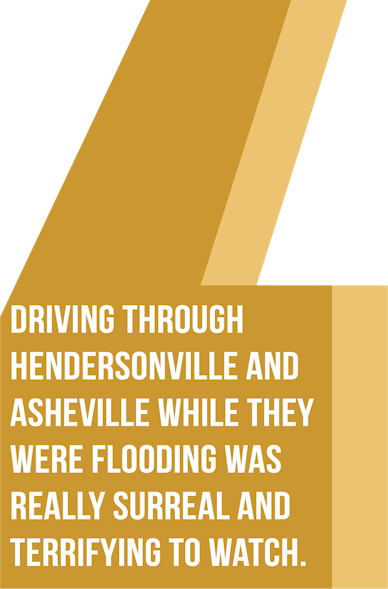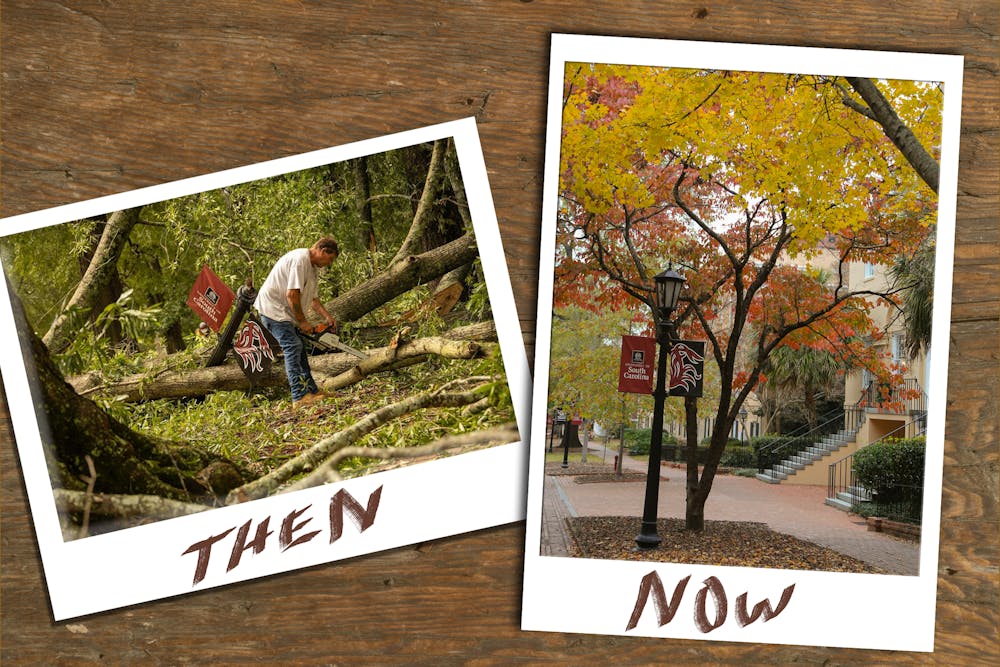One year ago, Hurricane Helene caused widespread damage across the Southeast, affecting areas from Florida to Virginia. Much of the immediate damage caused by the storm has since been repaired, and residents and local officials have worked to improve preparations for future natural disasters.
Hurricane Helene was a devastating storm, shattering records previously set by other hurricanes. The storm was the deadliest hurricane in the U.S. since Hurricane Katrina, with at least 250 recorded fatalities.
Helene had the highest recorded water levels, with rivers reaching previously unseen heights in many areas of the Southeast. The storm made landfall on the Florida coast as a Category 4 hurricane, with wind gusts reaching nearly 100 miles an hour and rainfall upwards of 30 inches.
John Quagliariello, a warning coordination meteorologist for the National Weather Service, said the wind gusts caused such significant damage because of how far the wind fields extended from the center of the storm, and how quickly the storm was moving.
"It was actually increasing in speed as it made landfall, so the winds really never had time to dissipate before the core of the storm made it up to South Carolina,” Quagliariello said.
Another factor in Helene's impact was the rainfall, both before and during the storm. Western North Carolina experienced days of rain leading up to the storm, and when Helene swept in with its own immense rainfall, that led to the catastrophic flooding, according to Quagliariello.
Addie Bennet, a former environmental studies student at the University of South Carolina, witnessed the flooding in Western North Carolina firsthand.

“I was really worried because I was in a flood-prone area of the North Carolina mountains and needed to get out soon because I saw how much rain was coming," Bennet said. "Driving through Hendersonville and Asheville while they were flooding was really surreal and terrifying to watch and I’m just glad I got out of there safely. The water was all the way up to my car door."
According to Brett Robertson, associate director of USC's Hazards Vulnerability & Resilience Institute, the word ‘unprecedented’ is frequently used when talking about Hurricane Helene and its impact on the Southeast.
“I think people in Columbia were at first quite surprised, given the fact that just a month prior, we had Hurricane Debbie, which also caused some pretty significant rainfall to the area,” Robertson said. “I think people thought, ‘Okay, we just went through Hurricane Debbie, and now we have Hurricane Helene on the way. There’s no problem that we can’t manage.’”
Despite significant efforts to distribute emergency weather alerts, adequate preparation for a natural disaster as severe as Helene remains a considerable challenge, Robertson said. Information reaches different people in different ways, and there is no singular method of spreading information that encompasses all individuals, according to Robertson.
“A lot of research would suggest that for groups that may not have access to resources, it’s about community connections and word of mouth," Robertson said. "As basic as it is, word of mouth is certainly a very good way to share weather-related information, and it seemed to be trusted in a lot of communities."
Community is also a critical part of recovering from a natural disaster, Bennet said. According to the National Institute of Health, strong community ties can lead to a faster and more effective recovery following a hurricane.
“Seeing the community that I cared about so deeply becoming so deeply negatively affected by this storm was really hard to watch," Bennet said. "Seeing these people lose their entire homes and in some cases friends and loved ones was really hard to witness."
Facebook groups and mutual aid organizations provided support for those affected in the wake of the storm, according to Robertson. When trees were down near people’s homes, the groups were able to connect debris removal companies to those in need, Robertson said.
“It’s very impressive that people, complete strangers, connected each other to resources through social media,” Robertson said. “Over the last decade, social media has been used not just to communicate disaster information, but to connect community members to resources. And that was certainly something that took place from what I saw in Hurricane Helene.”
According to Quagliariello, over time, the climate has warmed, allowing the atmosphere to retain more moisture. The frequency of extreme rainfall events has increased because of this, particularly in regard to tropical storms, he said.
Learning how to be prepared is the best way to protect oneself from these storms, Quagliariello and Robertson said. Though the threat of natural disasters is inevitable, there are things that can be done to lessen the severity of those threats for individuals.
“The biggest thing that anyone can do is create and gather emergency supplies in the form of an emergency supply kit, and that’s something that I believe is really important that everyone can do on an individual household level,” Robertson said.
Robertson recommended having enough supplies for at least 72 hours if disaster strikes.
“It’s impossible to predict how forecasts can really take hold, but at least having a baseline of emergency supplies allows you something to just have on hand,” Robertson said. “We have to be prepared, and it starts, really, at the individual level.”
According to Quagliariello, it's critical to use credible sources, such as the National Weather Service, other government agencies and local media when looking for information on the potential impacts of a natural disaster in your area.
“Use reliable sources for weather information," Quagliariello said. "There’s a lot of stuff now on social media that goes out that isn't put out by actual meteorologists."
Changing weather patterns are affecting areas that historically have not been impacted by natural disasters, such as Helene, according to Robertson.
“Have a plan, know your risks and take action,” said Quagliariello.

